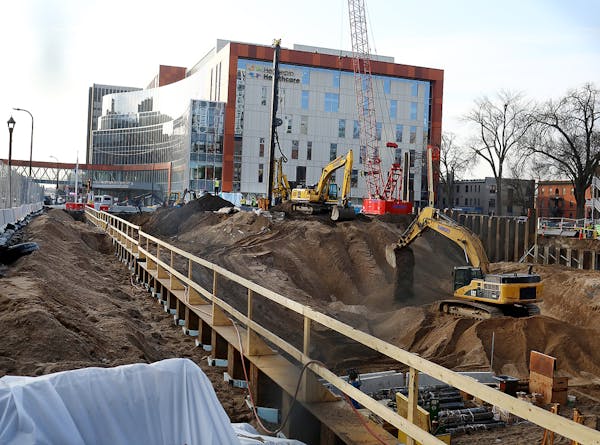Last month Nick Walton bought what he thinks is the last available redevelopment parcel in the Minneapolis Mill District, a stretch of former bluff land overlooking St. Anthony Falls on the downtown side of the Mississippi River where lumber barons made fortunes and tycoons made Minneapolis the flour capital of the world.
Next month, Walton plans to break ground on a 12-story rental building on a site at 200 S. 12th Av., that was never officially on the market, but is in an area with few options for developers.
"That's one of the reasons we were so excited about doing it," said Walton, president/CEO of Minneapolis-based Reuter Walton.
The $75 million project is the 31st for the company and one of the biggest. It was designed to provide an upscale rental option in an area dominated by upscale for-sale condominiums. Specifically, Walton is targeting professionals and empty nesters who want to live in the area but not buy a condo.
Originally, Walton planned to build an 11-story building of light-gauge steel, but it will now be 12 stories with 255 units and built of post-tension concrete. He said even though concrete costs more, adding another floor and more units helped offset the cost of complying with the city's new inclusionary zoning requirements. The building will have 18 income-restricted units with reduced rents for those who earn 60% of the area median income.
"By adding the additional density and not increasing our other fixed costs, we were able to maintain our same yield, which is what Reuter Walton and our capital partner were most focused on," he said.
The L-shaped building will have two levels of underground parking and two levels of aboveground parking. About three-quarters of the apartments will have 650 to 750 square feet while the larger ones will have 1,500 square feet or more. Those units are larger than what is typical in other neighborhoods such as Uptown, Walton said. Rents haven't been set.
Walton said he surveyed his previous projects to see what amenities were most popular and is including them in this project. That includes a third-floor swimming pool, club room, yoga studio, dog-friendly amenities and a rooftop gathering space with commercial kitchen and views of the nearby Stone Arch Bridge. But the project will also have a "maker's room" (craft room) and large work-from-home area with private offices, a large conference room and small work tables.
"That was a trend pre-COVID and it's an even stronger trend right now," he said.
Joe Tamburino, a neighbor and a board member of the Downtown Minneapolis Neighborhood Association, said that while he would prefer to have more homeowners in the area, visually the project will be a good addition and he will be glad to have more people living in the neighborhood and more eyes on the street.
The building comes at a time when thousands of new units are in the pipeline and vacancy rates are on the rise. The COVID-19 pandemic and office closures downtown have put a chill on rentals in some buildings, and Walton said growing concerns about public safety also has made it difficult to lease in some buildings.
The average vacancy rate in downtown Minneapolis, which includes the Mill District, during the second quarter was 6.4%, up 2 percentage points from last year but still lower than 2015, according to a survey by Marquette Advisors.
The vacancy rate for larger two- and three-bedroom units was much higher, nearly 10%. And those figures are expected to increase in the coming months and years as more apartments get built.
Downtown is expected to see construction of 2,343 units this year, but that figure is expected to fall the next year.
Mary Bujold, president of Maxfield Research in downtown Minneapolis, said there's no need for additional rentals in the short term but in the long term she expects it to be a good fit for the area.
"The neighborhood needs some time to absorb the supply that is already out there," she said. "I expect that given what is currently out there and the potential shifts in employment due to COVID, it could be fine in 21 months, but perhaps may take longer."
Walton said he's optimistic that by the time the project is finished the market will have stabilized and the concerns about crime and public safety will have been addressed.
"This project will take 21 months to deliver," he said. "And we're betting we can all work together now to help put Minneapolis in a better spot by then."
Jim Buchta • 612-673-7376
Olympian Kristi Yamaguchi is 'tickled pink' to inspire a Barbie doll
A conservative quest to limit diversity programs gains momentum in states
New Jersey is motivating telecommuters to appeal their New York tax bills. Connecticut may be next
US banning TikTok? Your key questions answered

